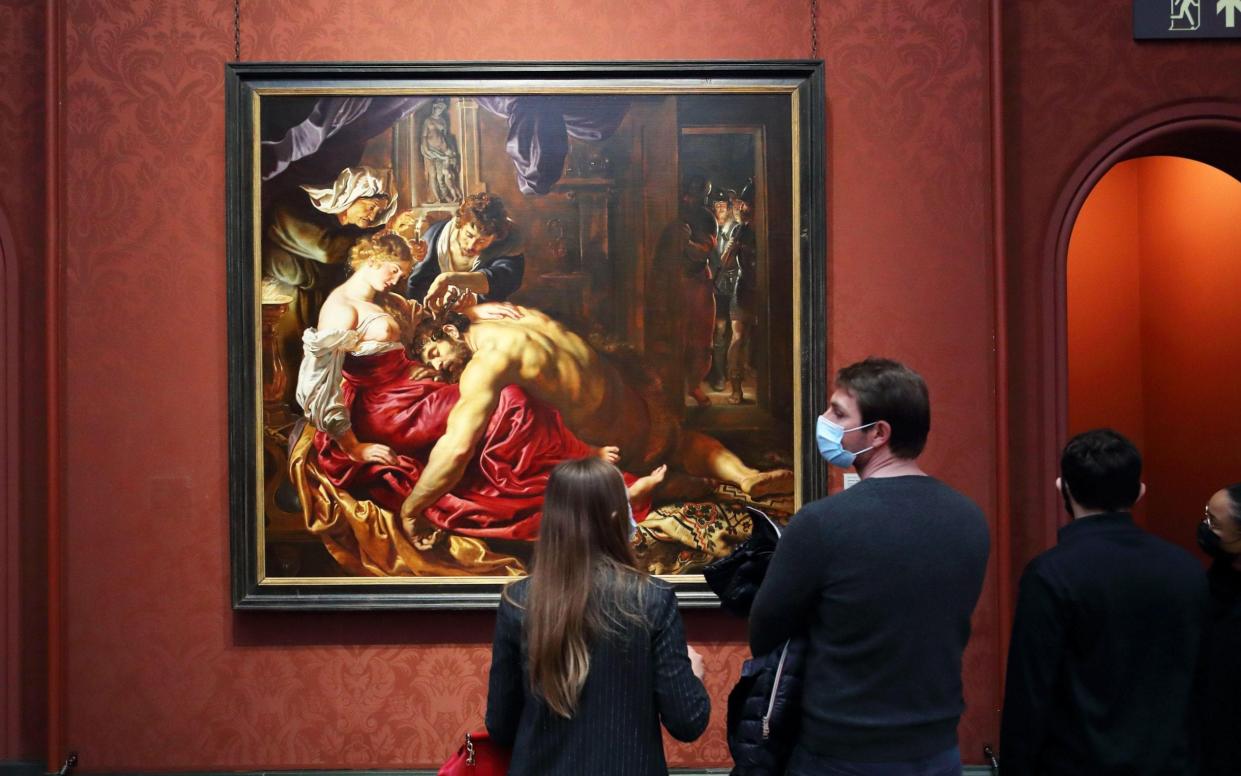Is this Rubens masterpiece at the National Gallery genuine? Computer says no

- Oops!Something went wrong.Please try again later.
A National Gallery masterpiece worth millions is a fake, according to a study using artificial intelligence.
Samson and Delilah, by Peter Paul Rubens, has long been the subject of debate, with some critics suggesting the painting was not created by the 17th-century Flemish master.
The painting bought by the National Gallery for £2.5 million in 1980 is almost certainly a fake, according to computer analysis.
An artificial intelligence (AI) programme, which can pick up on details including brush stroke patterns unique to individual artists, was used to scan the canvas listed as one of the gallery’s “highlights”.
‘Every patch, every single square, came out as fake’
Dr Carina Popovici, the scientist who carried out the investigation with Swiss company Art Recognition, said: “The results are quite astonishing. The algorithm has returned a 91% probability for the artwork not being authentic.”
“I was so shocked. We repeated the experiments to be really sure that we were not making a mistake and the result was always the same.”
She told The Guardian: “Every patch, every single square, came out as fake, with more than 90% probability.”
The technology was used to scan another painting attributed to Rubens whose provenance has never been in doubt, A View of Het Steen in the Early Morning, with results indicating a 98.76% probability that it was painted by the artist.
The findings support previous speculation about the origins of Samson and Delilah, with some experts arguing that the work is only a copy of a lost original painting by Rubens, painted around 1610.
‘Misattributed’ paintings
It has been suggested that the work bought by the National Gallery was erroneously declared to be by Rubens in the Twenties by art expert Ludwig Burchard, who was later found to have misattributed paintings for his own commercial gain.
A spokesman for the National Gallery said: “The gallery always takes note of new research. We await its publication in full so that any evidence can be properly assessed. Until such time, it will not be possible to comment further.”
The painting depicts Samson slumped sleeping in the arms of Delilah, while his hair is cut by a servant in order to reduce his superhuman strength.
It has been suggested that the palette used in the work differs from that usually favoured by Rubens, with the quality of the painting not matching that of the master.
Rubens was born in 1577 and enjoyed a prolific artistic career, largely based at his studio in Antwerp, producing more than 1,400 works.
In 2002, a new record was set for his paintings, with Massacre of the Innocents fetching £49.5 million at auction in Sotheby’s in London.

